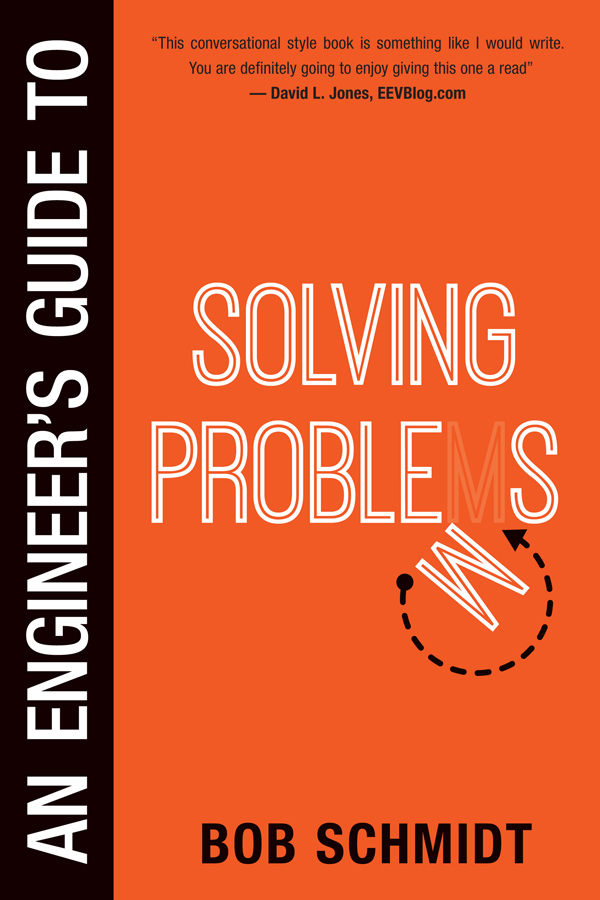Want to know more? Scroll down below the cover art for additional details.

Description
The transition from engineering school to real world problem solver can be rough. Suddenly there is not just one correct response to a problem. There might be an infinite number of correct solutions where some are simply better than others. Some problems are so layered and twisted that their solutions seem absurdly complex.
Arm yourself for success with the methods in this book:
- The Five Questions every problem solver must answer.
- The best and worst ways to communicate your ideas.
- New ways to see what other observers miss.
- Mastering the right tools.
- Six warnings to heed when you think you have a solution.
- Critical challenge questions before you declare victory.
Employers and customers cherish engineers who consistently meet their toughest challenges. An Engineer's Guide to Solving Problems delivers simple methods, practical advice, and entertaining stories to help you sharpen your skills.
Details, Details...
ISBN 978-0-9887476-2-3 (softcover)
252 pages
6 x 9 inch paperback
ISBN 978-0-9887476-3-0 (Kindle format eBook)
Second Edition
Originally published as The Dog Barks When the Phone Rings: An Engineer's Guide to Solving Problems.
Table of Contents:
| Introduction | 1 | |
| Chapter 1 | The Dog Barks When the Phone Rings | 11 |
| Chapter 2 | What Do You Know? | 17 |
| Chapter 3 | Communicating Clearly | 29 |
| Chapter 4 | Barriers to Good Communication | 41 |
| Chapter 5 | Methods for Better Communication | 47 |
| Chapter 6 | What are the rules? | 53 |
| Chapter 7 | What Don’t You Know? | 63 |
| Chapter 8 | Finding the stuff you don’t know | 67 |
| Chapter 9 | Experiments | 81 |
| Chapter 10 | Debug by Division | 95 |
| Chapter 11 | Stimulus-Response testing | 99 |
| Chapter 12 | “If I Could See it, I Could Fix it!” | 109 |
| Chapter 13 | Measurements | 119 |
| Chapter 14 | Instrumenting Software | 131 |
| Chapter 15 | Tools and Toolmaking | 135 |
| Chapter 16 | Troubleshooting Complex Systems | 145 |
| Chapter 17 | Intermittent Problems | 159 |
| Chapter 18 | How to Think, Part I | 169 |
| Chapter 19 | How to Think, Part II | 177 |
| Chapter 20 | A Great Idea does not have to work, To be a Great Idea | 195 |
| Chapter 21 | Study Your Mistakes | 201 |
| Chapter 22 | Business (and the business of Solving Problems) | 207 |
| Chapter 23 | Customers and Customer Service | 215 |
| Chapter 24 | Final Thoughts | 223 |
| Bibliography and Notes | 237 | |
| Acknowledgements | 243 | |
| Index | 245 |
Would you like a free PDF copy of An Engineer's Guide to Solving Problems? Go to this blog post to get yours: